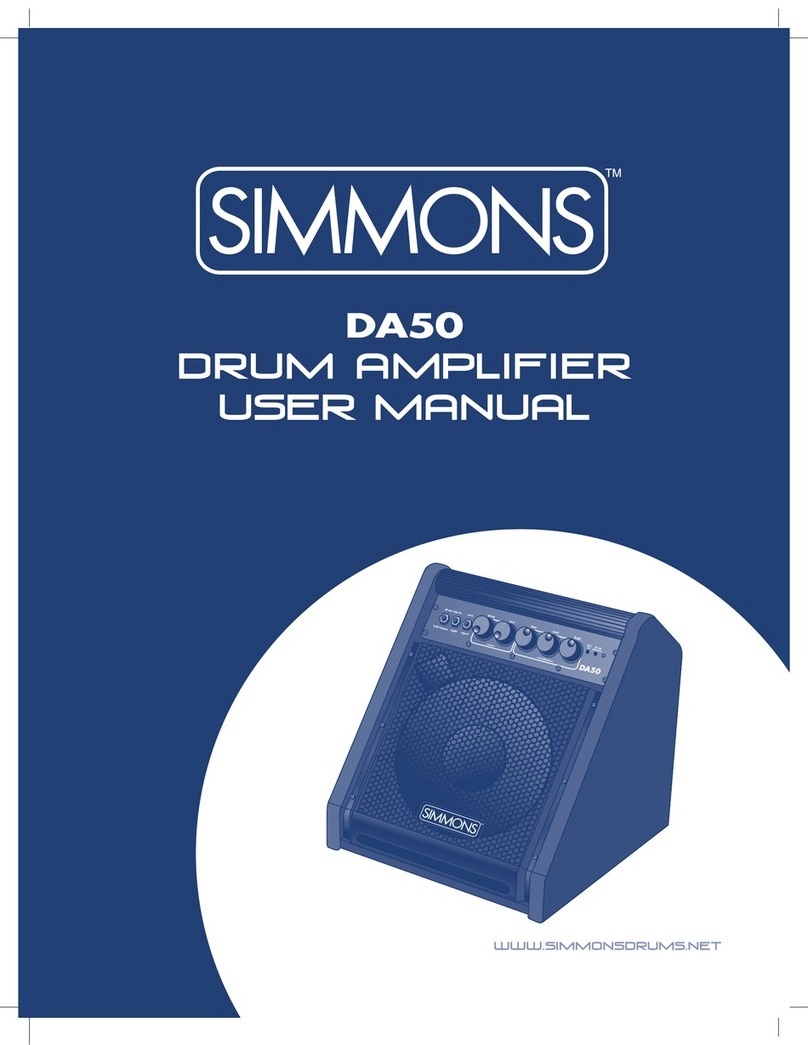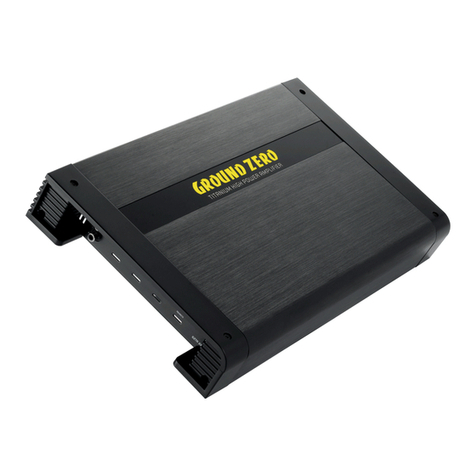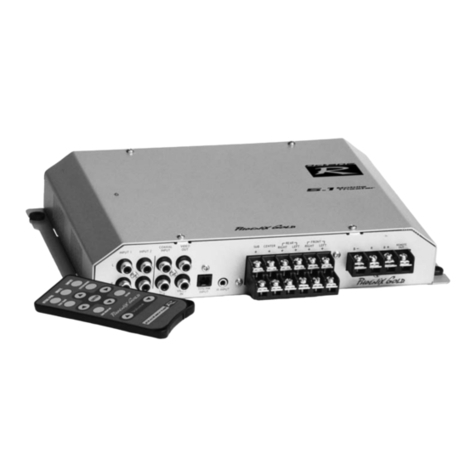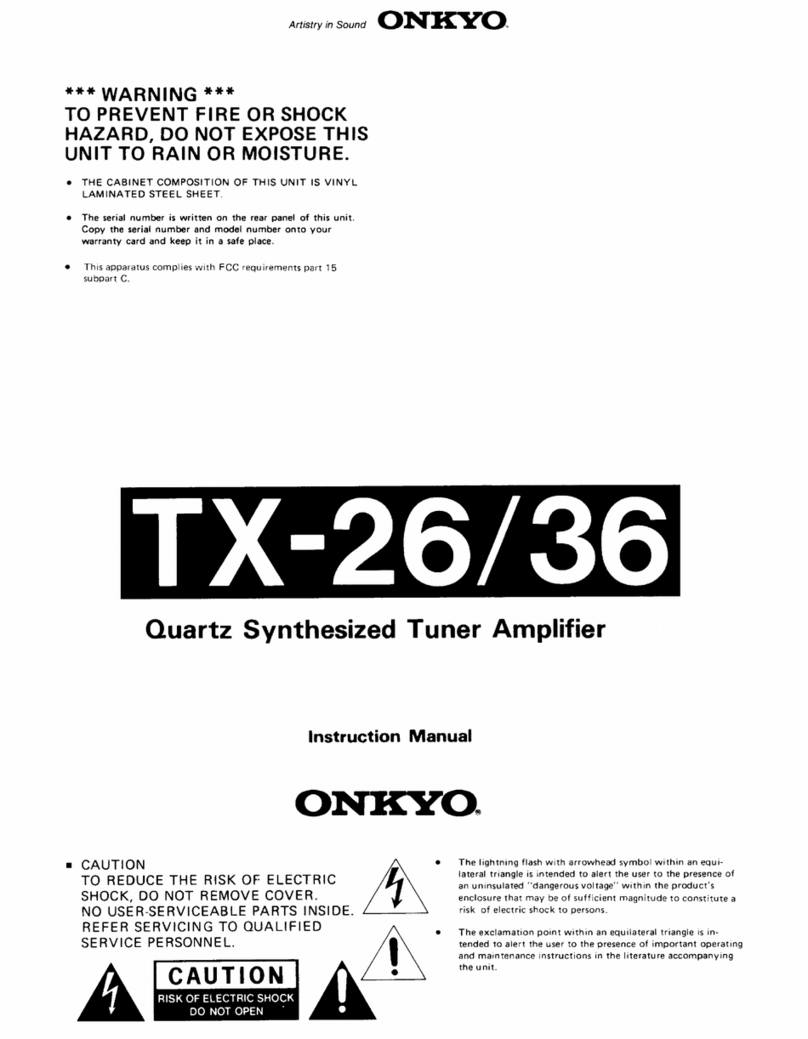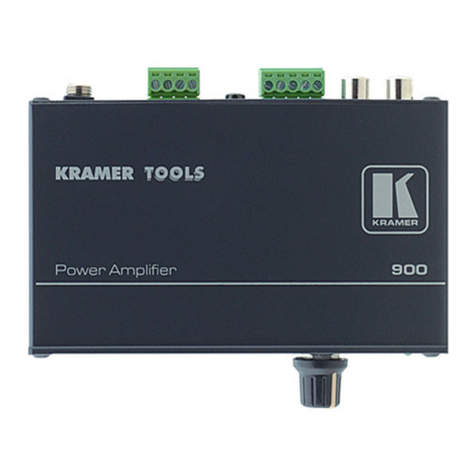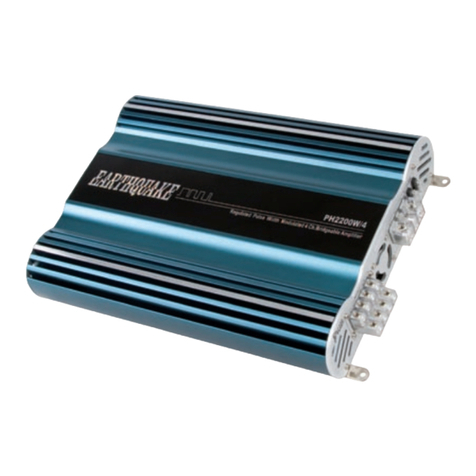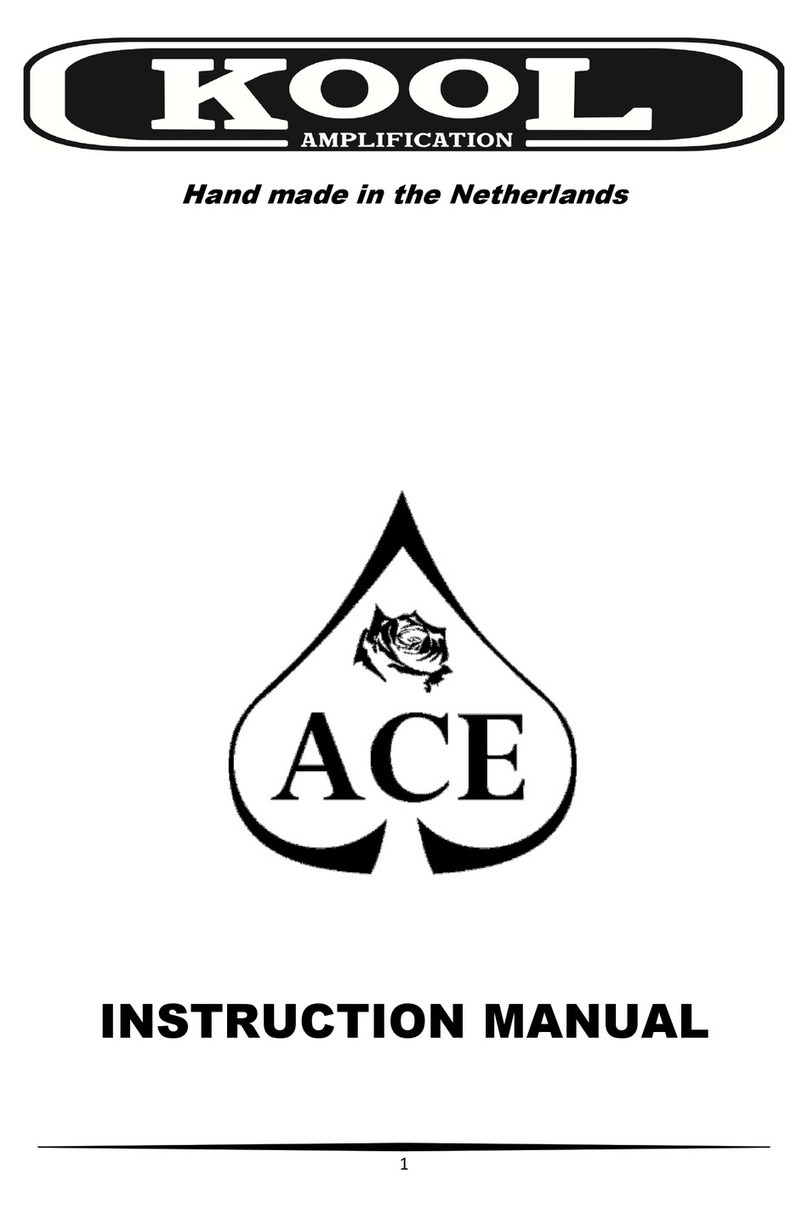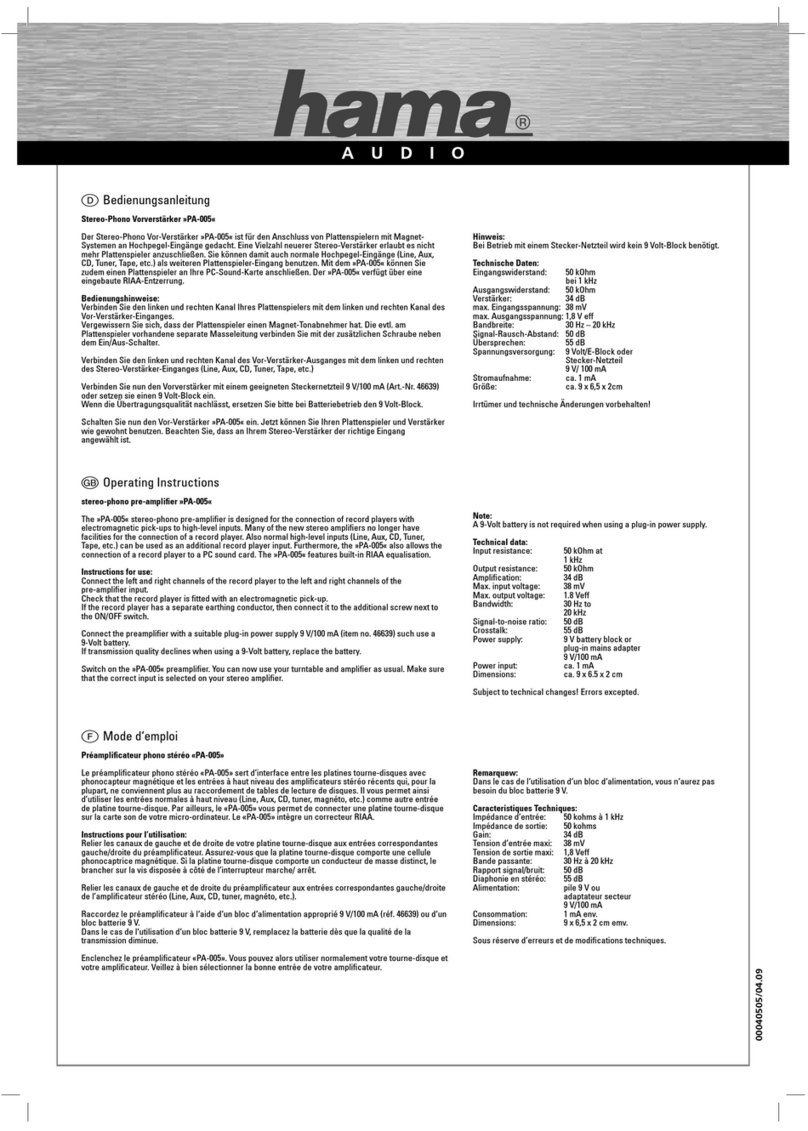Elliott Studio Arts 66-001P User manual


2
Elliott Studio Arts Series Sixty-Six
Model 66-001p
Vacuum Tube Reference Stereo Preamplifier
Table of contents:
Introduction………………………………………………………………………….3
Placement and hookup……………………………………………………………..3
Things to consider…………………………………………………………….…….4
Maintenance…………………………………………………………………………6
Vacuum tube replacement………………………………………………………….6
Pictorial diagram……………………………………………………………………7
Specifications………………………………………………………………………..7
Warranty……………………………………………………………………………..8
Contact information and Registration form……………………………………..9

3
Welcome to the wonderful world of vacuum tube audio!
Vacuum tube audio components can add a life to music that only the most
expensive solid-state gear can match. The Elliott Studio Arts 66-001p stereo
preamplifier was designed to give many years of musical satisfaction and add fun
to your listening experience. Although not inexpensive the 66-001p was designed
for the ‘real-world’ music lover and is a high value in performance and no-
nonsense design.
The 66-001p is custom designed and hand-built. It features point-to-point
circuitry, hand matched high-temperature components and wiring, and custom
wound output transformers. The casework is heavy gauge steel. The aluminum
circuit panel floats on nitrile dampeners to minimize microphonics. The entire
circuit panel provides a low-impedance ground plane for ultra low noise. The line
stage runs in ‘parallel feed’ mode and utilizes local feedback to stabilize gain and
lower distortion. The phono stage uses a FET / Triode cascode for high gain and
low noise. Extensive capacitive bypassing at every amplification stage ensures
powerful dynamic sound. The separate power supply is overbuilt utilizing
computer-grade filter capacitors and a choke for an ultra-clean and ‘stiff’
reservoir. Both the high voltage for tubes and the filament supply is regulated.
The AC input has RFI filtering and surge limiting.
Functional features include balance control, mono and mute switch, along with
the volume and source select. There is a ¼” stereo headphone jack for private
listening, suitable for low to medium impedance headphones.
Please be aware that this is tube preamp, it gets hot and has high voltage
potentials inside that can be hazardous to your health. Please refer all service to
a qualified technician; we will gladly supply full schematic documentation and
replacement parts upon request.
You are qualified to replace the tubes and fuse. Please carefully follow the
procedures outlined below so you don’t cause harm to yourself or the preamp.
Placement and hookup of your shiny new preamp
Place the preamp on a level non-resonant surface with plenty of ventilation
above and below. The power supply umbilical is 6 feet long, make sure to locate
the power supply well away from the preamp and it’s sensitive input circuitry. It
also should live on a level non-resonant surface with plenty of ventilation.
Using the provided power umbilical, connect the preamp to the power supply.
The cable has a male 4-pin XLR on one end and a female on the other. The male
plugs into the power supply and the female plugs into the preamp. The AC cable
is a shielded IEC type; plug into the IEC socket on the back panel of the power
supply. Since the preamp has built in RFI filtering it is not necessary to plug into
any additional filtered power strips or conditioners, but feel free to experiment.

4
WARNING! Do not power up supply before connecting power umbilical to
preamp; also, do not unhook preamp from power supply when powered. This
could cause damage to the regulator circuits. Always wait 1 minute for the
supplies to discharge before hooking up or disconnecting the units if previously
powered.
Figure 1 - Rear panel of Preamp
recordrecord
out 1out 1 out 2out 2 phonophono
Series Sixty-Six
Vacuum Tube Reference
Preamplifier
Series Sixty-Six
Vacuum Tube Reference
Preamplifier
PowerPower
~Caution~
lethal voltages within
disconnect from psu
before servicing
use only 12au7a and
ECC99 tubes
~Caution~
lethal voltages within
disconnect from psu
before servicing
use only 12au7a and
ECC99 tubes
videovideo dgtl Adgtl Adgtl Bdgtl Btapetape tunertuner
Hand Built with Pride
in the USA
Hand Built with Pride
in the USA
66-001p66-001p
The preamp has 5 unbalanced stereo line inputs, 1 unbalanced stereo phono
input, dual unbalanced stereo outputs and 1 unbalanced stereo recording output.
Connect your source components accordingly using high quality RCA style
cables. If using a turntable, ensure that the ground wire is connected to the
provided grounding post adjacent to the phono inputs on the rear panel.
Once you have your new preamp installed its time to fire it up! (The power switch
is located on the power supply). It takes a few minutes for the tubes to come up
to temperature. Though you will get music after about 1 minute it’s best to let the
preamp warm up for at least 20 minutes before any critical listening.
.
Now some more things to consider as you’re enjoying the
music:
Feel free to try different brands of tubes, they all have a different sound and you
may like some better than others. Currently only one manufacturer makes the
ECC99 tube, but the 12au7a’s are available in many brands and vintages. The
tubes supplied are a good starting point, they’re solid performers, but you can get
real tweaky and spend a fortune on high-end tubes if you’re so inclined. Or you
may just want to turn it on and listen, like I do.
If you should feel the need to try different tubes be careful to order them with
matched sections or have them tested (they’re dual triodes, two tubes in one
bottle). Most reputable suppliers can provide tubes with matched sections.
Don’t handle the tubes too much- keep them clean and free from fingerprints;
they’ll stay cooler and last longer. It is good to swap tubes once a year (V1 to V2,
and V3 to V4). This insures that the DC filament current is reversed periodically

5
which is good for tube life. The filament current polarity is reversed between like
tube sockets to facilitate this process.
The tubes should last a very long time, however they do have a finite life span. It
is perfectly safe to leave the unit powered up constantly but this will shorten tube
life.
I believe that the quality of speaker, input and power cables affects the sound-
use good quality wire. I also believe there is a law of diminishing returns; one
could easily spend more on a set of interconnects than the cost of the entire
amplifier. Use your own judgment here; it’s subjective and a matter of personal
taste. If you’re into DIY there’s plenty of websites featuring homemade speaker
and interconnect cables you can try. That’s what I’ve done.
You can try different ‘feet’ under the preamp; some like the solid cones, some
like the squishy pods. The rubber feet provided will support the weight and
isolate the vibrations adequately. Cones will drain away vibrations into whatever
the preamp rests upon, and squishy pods will keep vibrations from getting out but
may help damp them in the process. I haven’t tried them.
The 66-001p has very low output impedance thanks to the use of output coupling
transformers. This enables you to use long runs of cable between the preamp
and your power amplifier without affecting the frequency response. You can then
locate your amplifier wherever is most convenient - closer to the loudspeakers for
shorter speaker runs perhaps. The gain is also on the low side by design. You
may have to turn the volume control higher than you are accustomed to. This is
OK, most amplifiers will clip with as little as 1.5 volts –the 66-001p will put out a
full 6 volts p –p without distortion. This gain structure was chosen to reduce
noise and put the volume pot in a more linear region of its travel for average
listening levels.
The preamp is an unbalanced design and therefore a little more prone to induced
noise than the professional balanced units. If you experience hum try dressing
the input cables differently. You will find that as you move them around behind
the preamp the hum level will go up and down, especially from your turntable. It
is an EMI (electromagnetic) field from power transformers that causes the hum.
This is usually not a problem; a little experimentation should reduce or eliminate
the hum. Make sure to locate the power supply unit well away from the preamp
and input cables.
If there is a nasty buzz there may be a ground loop or an open ground between
your source and the 66-001p, or the turntable ground lead is not connected.
Check your input cables for continuity. The use of a high quality isolation
transformer is recommended to remove ground loops, especially from video
sources that have cable TV connected.
Do not float the AC ground on the 66-001p or any other grounded
component in your system in an attempt to isolate the hum! This is a safety

6
ground and is there to protect you if there is a fault that could energize the
chassis of the component and cause electrocution.
Maintenance of your amplifier
Tube equipment requires periodic maintenance to ensure optimum performance.
Cleaning –Keep the tubes clean and free of dust and oily deposits. Remove and
clean with a soft towel and a mild solvent if necessary (every couple of years). Be
careful not to spill the solvent on the painted surface of the casework! The
casework can be cleaned with a mild detergent and soft towel. In both instances,
apply the liquid to the towel, not directly to the amplifier! Always clean when the
preamp is off and has cooled down. The added benefit of this is that by removing
and re-inserting the tubes you are cleaning oxidation off of the tubes’ pins and
the socket.
Be sure to swap their positions when re-installing; V1 for V2 & V3 for V4; this
reverses the polarity on the filaments to prolong tube life. You may also want to
blow out the dust with compressed air while you’re in there.
Heat –Your preamp will create heat, that’s the nature of tubes. Keep it well
ventilated and away from other heat sources
Vacuum tube replacement:
With power off for more than 5 minutes, disconnect from the power supply and
remove the top cover of the preamp. Refer to figure 2 for tube locations- the
phono input tubes (V1 & V2) are 12au7a’s and have a removable aluminum
shield. The linestage tubes (V3 & V4) are ECC99’s. Be careful when handling
tubes, they are fragile. Carefully remove tubes from their sockets and replace
with new ones, observing the pin-orientation; they can only go in one way –do
not force them!
Make sure the tubes are clean and replace the top cover. Hook up to the power
supply as described above and enjoy. New tubes will need to break in a bit and
will sound better progressively over the next 10 hours or so of music playback.

7
Figure 2 –Vacuum tube layout
Specifications:
*Non-inverting design
*Unbalanced inputs / unbalanced outputs
*Fully point to point construction with high temp wiring and silver solder
*Hand-matched high quality parts used throughout
*FET / Triode cascode phono stage input topology for high gain and low noise
*MM RIAA passive equalized phono input (47K input impedance, 15pf capacitance)
*RIAA stage gain = 45dB
-S/N ratio: 76dB reference -40dB in @ 1kHz, +5dB record out, no weighting
*Line stage gain = 14dB
-S/N ratio: 100dB reference 1V p-p out, no weighting
*Tube compliment: 2 ea. 12AU7A - phono stage, 2 ea. ECC99 - line stage
*High quality Alps Blue volume pot
*Balance control out of direct signal path
*Volume and balance controls nested between amplifier stages providing constant load on phono
stage and line inputs for consistent frequency response
*Mono (true summing) and Mute switches for added convience
*5 line level inputs - input impedance 100K ohm
*Record output jacks - output impedance ~ 5K ohm
*Dual main output jacks
*Transformer coupled output - headphones and main outs
*2 ohm output impedance - will drive 8 ohm speaker to 1 watt!
*Fully regulated external solid state power supply for low noise

8
5 Year Limited Warranty on Parts and Labor
Owner must register product within 30 days of purchase by sending in the
registration form below. You will be contacted if any upgrades or modifications
become available. We will not sell your information.
Elliott Studio Arts will cover under warranty any repair of our products due to
defective parts or workmanship, this includes shipping damage from factory to
customer. If a defect is discovered Elliott Studio Arts will, at its discretion, repair
or replace the product at no charge to you provided it is returned within the
warranty period. The customer must pay shipping fees to Elliott Studio Arts for
warranty service.
Elliott Studio Arts will not cover under warranty any repairs of our products due to
neglect, abuse, accident or misapplication. Elliott Studio Arts reserves the right to
determine what constitutes neglect, abuse, accident or misapplication. This
includes damage caused by improper connection to other equipment and
modifications carried out by any entity other than Elliott Studio Arts. Elliott Studio
Arts is not liable for any damage to associated equipment or property due to
neglect, abuse or accidental damage to Elliott Studio Arts products.
Any applicable implied warranties, including warranty of merchantability, are
limited in duration to a period of the express warranty as provided herein
beginning with the original date of purchase and no warranties, whether express
or implied shall apply to the product thereafter. Under no circumstances shall
Elliott Studio Arts be liable for any loss, direct, indirect, incidental, special, or
consequential damage arising out of or in connection with the use of this product.
Elliott Studio Arts warranty will cover for the first 5 years of ownership the
following:
*All parts replaced under the warranty agreement except tubes and transformers,
*All labor for said repairs,
*Return shipping to registered owner.
All products must be shipped to factory for warranty repairs. Customer must
contact Elliott Studio Arts for Return Authorization Number before shipping
product to factory.
Please save original shipping carton for this purpose.
**Tubes are not covered under this warranty**

9
Contact Information:
Elliott Studio Arts
206-351-7248
Feel free to contact us for questions regarding repairs, service information, set up
instructions or praise..
-Specifications, parts and design subject to change without notice-
………………………………………………………………………
Elliott Studio Arts Product Registration Form
Model #
Serial #
Purchase Date
Dealer / Direct
Name
Address
email
Please fill out and mail to:
Elliott Studio Arts
Product Registration
412 NE 80th St
Seattle, WA 98115
Table of contents
Other Elliott Studio Arts Amplifier manuals
Popular Amplifier manuals by other brands
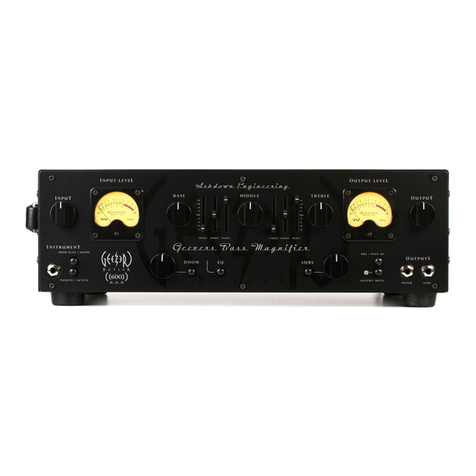
Ashdown
Ashdown Geezer Butler Signature Bass Amp Head user manual

WhitakerAudio
WhitakerAudio 60 W Stereo Power Amplifier User and assembly manual
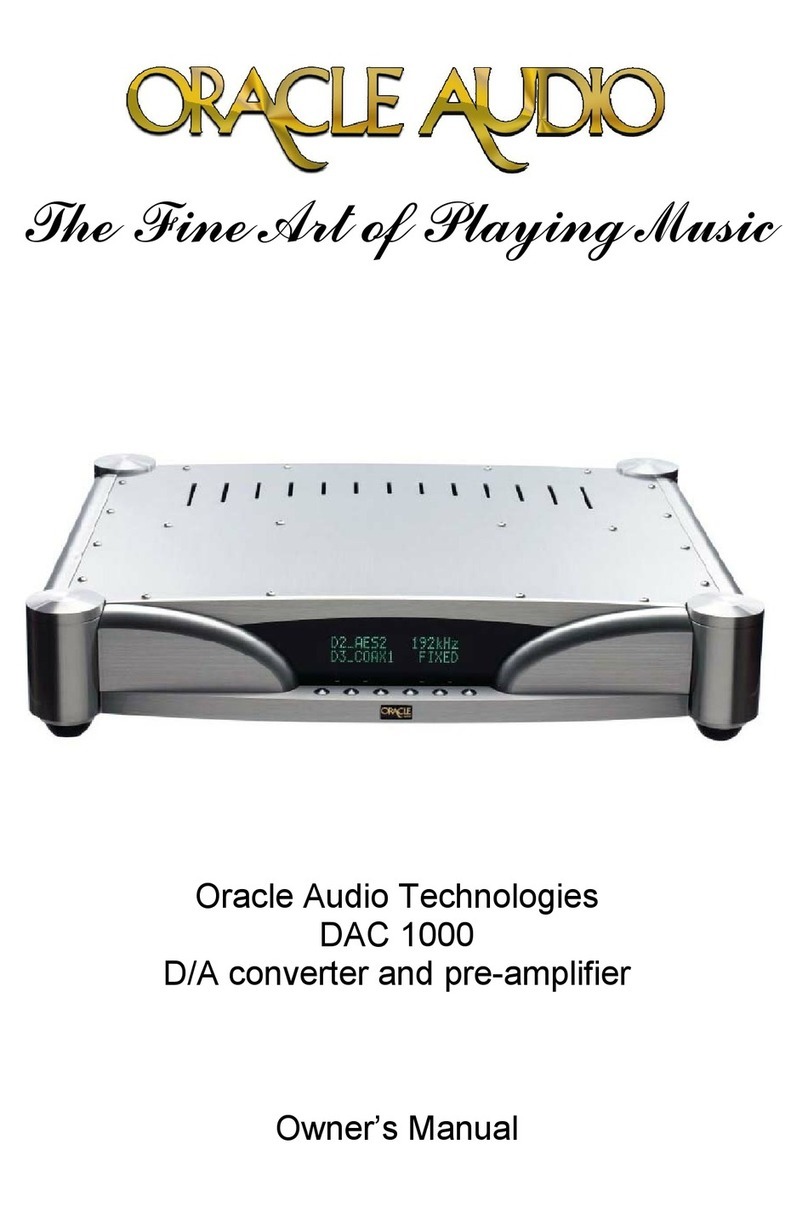
Oracle Audio
Oracle Audio DAC 100 owner's manual

Quantum Audio
Quantum Audio QXA2500PRO Installation and owner's manual
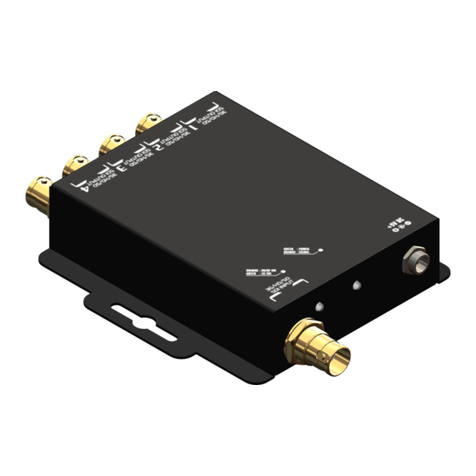
Gomax
Gomax SP-3014 user manual
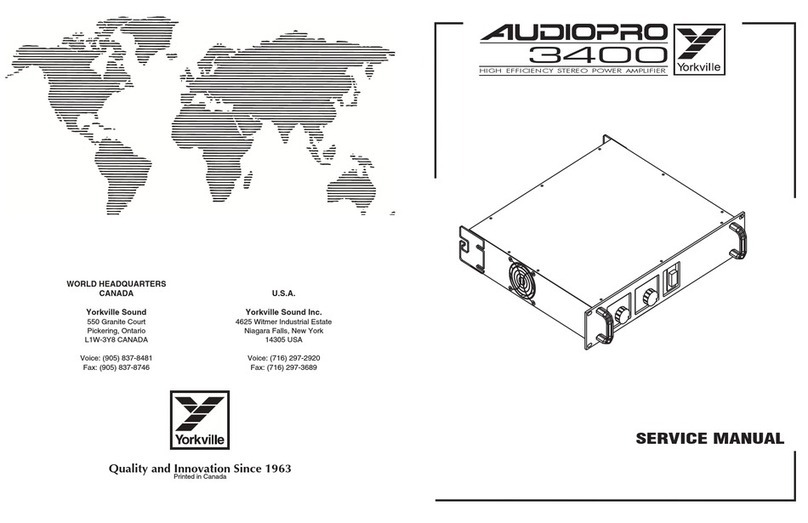
YORKVILLE
YORKVILLE Audiopro 3400 Service manual


